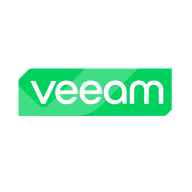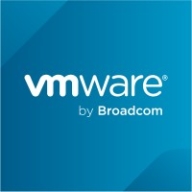

VMware Live Recovery and Veeam Data Platform compete in the recovery and backup software category, with each providing robust solutions for virtualization and disaster recovery. Veeam is viewed as having the upper hand due to its broad deployment options and integration capabilities.
Features: VMware Live Recovery offers comprehensive disaster recovery automation, integration with EMC for zero RPO/RTO, and seamless processes with storage vendor integration. Veeam Data Platform provides instant VM recovery, file-level restoration, and continuous data backup, supported by integration with various environments.
Room for Improvement: VMware Live Recovery could improve in deployment flexibility, cost structures, and third-party integration, and it lacks some native cloud functionalities. Veeam Data Platform could enhance its support for physical servers, integrate better with non-Windows systems, and simplify its complex licensing model, while also improving cloud stability.
Ease of Deployment and Customer Service: VMware Live Recovery is typically on-premises with strong enterprise support but variable technical assistance effectiveness. Veeam offers versatile deployment in on-premises, hybrid, and cloud environments with reliable customer service, suiting diverse infrastructures.
Pricing and ROI: VMware Live Recovery is often considered expensive, with returns realized over time through automation and downtime reduction. Its licensing is complex, appealing more to larger enterprises. Veeam's pricing is competitive with a straightforward licensing model, offering a balanced cost-benefit, especially in mixed environments.
The escalation from first, second to third tier is sometimes very long-lasting, but the resolve rate is quite high.
Most cases are handled perfectly.
I would rate their technical support a 10 out of 10.
They are knowledgeable.
Our team has dedicated personnel for support who engage with the supporting teams.
The technical support from VMware is very good and operates based on a service level.
Integration with other vendors is also seamless.
In order to scale Veeam Data Platform, we have to pay a lot more money.
There are no issues with stability in Veeam Data Platform.
For our test labs, dev labs, and production, it is very stable.
The improvement we would like to see is the option to scale Veeam Data up in smaller sections rather than large sections, which requires paying much more.
Additional features expected in the next release to make it even better, most parts are on the way, and the AI integration should be improved.
Reducing it by 20% would make it more accessible to a broader range of customers.
It's important for the cost to be justified based on the features used in production.
They follow their SOP, but they initially engage very low-level personnel who are not able to answer or resolve the issue, so they escalate or take a very long time to resolve the issue.
I would like to see improved integration services with other solutions, such as SIEM management or security monitoring.
I don't consider the price expensive given its importance.
Veeam Data Platform is more expensive than OpenStack because we pay for it in US dollars, while we pay for OpenStack in Egyptian pounds.
A reduction of 20% in the current cost would make the solution more attractive to clients.
Previously, when acquiring a license for Ethiopian drug supply chains, the price was significantly high, especially after Broadcom joined VMware.
We mostly prefer to recommend this to customers due to ease of use, abundant features, and support.
For cloud-based solutions, the cost seems quite pricey, so we stick to on-premises deployment.
The platform is user-friendly, comprehensive, and compatible with numerous market solutions, including virtualization and bare metal servers.
The most important aspect of this platform is data security with immutable data in the storage.
The most valuable features in Veeam Data Platform are data resilience and data mobility.
If I talk about vCenter and the auto failover of the VMs, such as live migration, that is a very cool feature that we require in our environment because we have different data centers, and if some of the servers fail, they automatically failover and move the VM from one side to another.
It is used for data replication between data centers and allows for quick response in times of failure, ensuring data availability.
The solution offers a rich set of features, well adapted in the market.
| Product | Market Share (%) |
|---|---|
| Veeam Data Platform | 20.2% |
| VMware Live Recovery | 7.2% |
| Other | 72.6% |


| Company Size | Count |
|---|---|
| Small Business | 216 |
| Midsize Enterprise | 99 |
| Large Enterprise | 138 |
| Company Size | Count |
|---|---|
| Small Business | 36 |
| Midsize Enterprise | 13 |
| Large Enterprise | 39 |
Veeam Data Platform is designed for modern data management, providing secure backups, intelligent data insights, and resilience. It ensures data is protected, recoverable, and manageable across complex environments, supporting business continuity effectively.
Veeam Data Platform stands out with its robust capabilities in data protection, orchestrated recovery, and efficient management. It offers a simple interface while ensuring data security and availability, which is critical for businesses. The platform's compatibility with virtual machines, databases, and applications across VMware, Hyper-V, and cloud environments makes it a versatile choice for backup and disaster recovery strategies. Users gain confidence from its performance, from secure backups to facilitating effective infrastructure monitoring.
What are the key features of Veeam Data Platform?Veeam Data Platform is widely implemented by industries needing robust disaster recovery plans and data management solutions. It is particularly valuable in environments utilizing hybrid cloud solutions, protecting mission-critical workloads, and ensuring business continuity. Businesses leverage its capabilities to safeguard data integrity and facilitate long-term retention through efficient infrastructure management.
We monitor all Disaster Recovery (DR) Software reviews to prevent fraudulent reviews and keep review quality high. We do not post reviews by company employees or direct competitors. We validate each review for authenticity via cross-reference with LinkedIn, and personal follow-up with the reviewer when necessary.